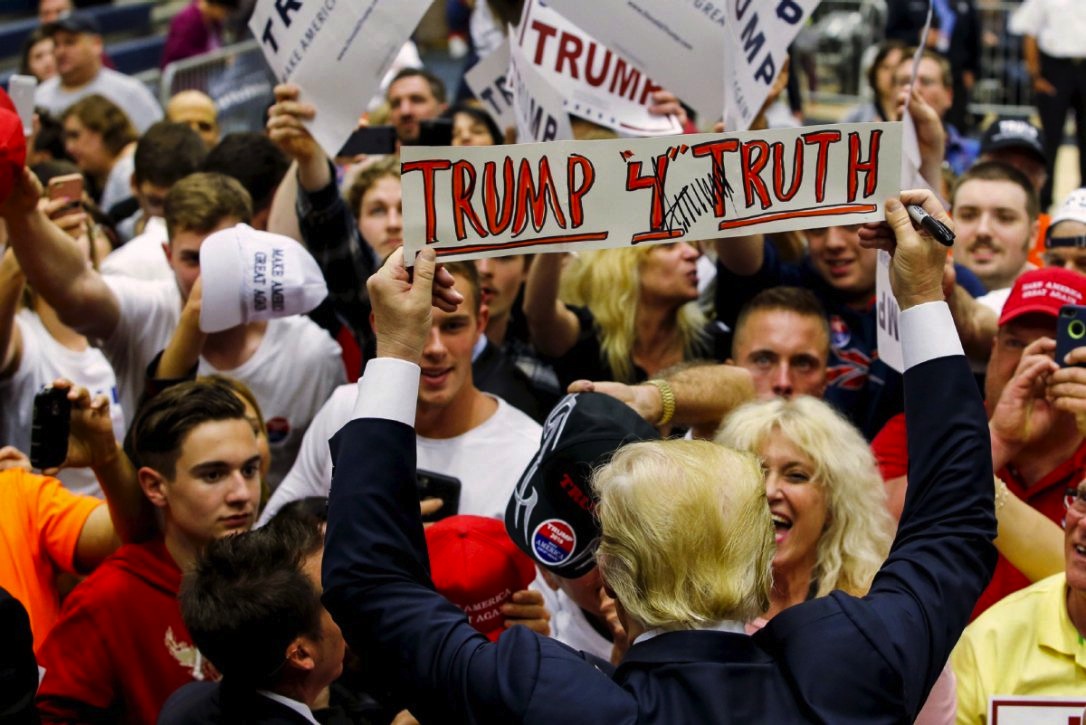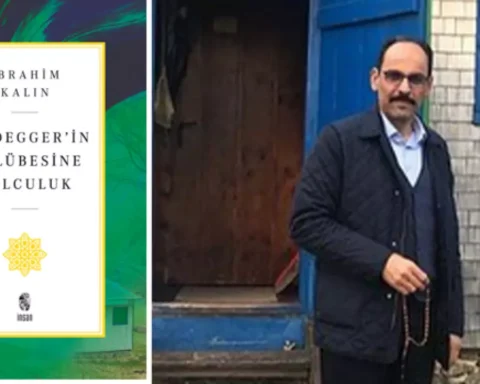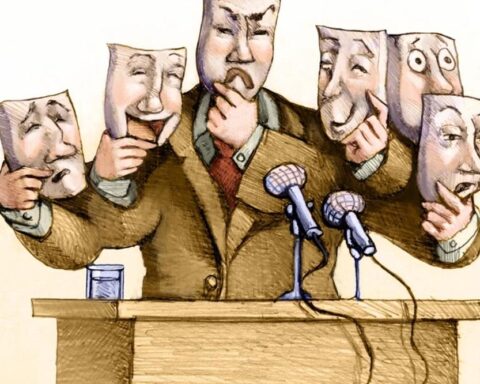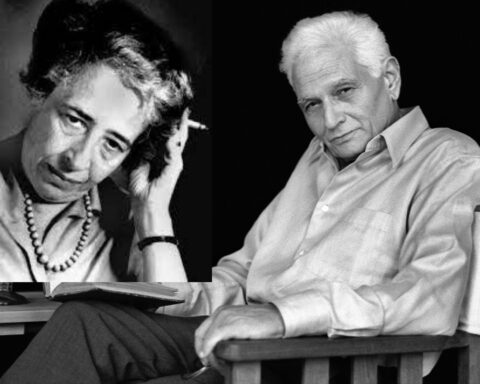The expression post-truth is a complex one. This complexity does not stem from it involving the kind of conceptual transformation intended in earlier expressions such as post-modern or post-metaphysical; nor does it, as is implicitly the case with certain conceptual transitions (such as postwar), refer to a situation where the effects of an event that has definitively ended continue to be felt afterward. In expressions like post-modern or post-metaphysical, it is assumed that the conceptual structures associated with definitions such as modernity or metaphysics have either spontaneously eroded (mostly due to social conditions reduced to economics, as in the “cultural logic of late capitalism”) or been dismantled through the efforts of certain philosophical adversaries.
When it comes to post-modernity, these concepts are primarily related to epistemology. In this regard, the expression first defines a state of modernity and then claims that the following categories—the Subject as the agent of knowledge, Rationality as the relation of knowledge, Society (including Universal or Global Society) as the object of knowledge, Speech (Logos), including classical and symbolic logic, as the medium of knowledge, and Writing, along with the Author, as the form of knowledge—are no longer valid and have been eroded. In place of these, it proposes alternative definitions that challenge the uniformity of such categories: the Other instead of the Subject; Narrative instead of Rationality (not entirely, but largely); Community instead of Society (again, not entirely, but mostly); Deconstruction—which still includes logic but continuously spins it on its own axis—instead of Speech; and instead of Writing, a Hermeneutic Suspicion capable of uncovering the suppressed or hidden meanings embedded in modern forms of reading. Of course, post-modernity still retains elements of modernity; however, what is important is the claim that new intellectual worlds have now been opened. Although this claim depends on the “key” used to open the door—so that we cannot speak of a unified post-modernity as we do of modernity—the issue is not merely a periodization following modernity, but also the implicit assumption of such a transition and the skepticism toward the concepts and categories of modernity that comes with it.
The expression post-metaphysical, on the other hand, corresponds to the abandonment of interpreting what is in terms of what ought to be. In this way, it refers to the transformation of the age-old questions of metaphysics—and the conceptual universe associated with them—within the framework of the “linguistic turn.” Added to this are new modes of secularization. Although not as dominant as post-modernity, post-metaphysical thought has nonetheless occupied the intellectual and academic arena. For this reason, it argues that, in order to legitimize an unfinished modernity, especially political philosophy must liberate itself from the question of what ought to be and instead focus on the real problems of the world we live in. It maintains that procedures capable of enabling timely and pluralistic decisions in political matters must be put into practice. Its central thesis rests on the proposition that “there is no other world”—whether religious, metaphysical, ideal, or otherwise. Although post-metaphysical thinkers may differ in the value they attribute to this “world,” they are nearly unanimous in rejecting grand concepts such as Being, Spirit, the Good, or even Metaphysics itself; instead, they argue that solutions must be understood through the pragmatics and dialogical processes of the language spoken within society—and thus, through its rationality.
Ultimately, the post-metaphysical corresponds to a state of earthliness. (Let us note in passing: It is genuinely interesting—and equally a profound paradox—that modernity, which is assumed to have opened itself to the universe, has in fact grounded itself in this earthliness, anchoring itself to the planet called Earth, and has termed this process secularization—and later, drawing inspiration from the term Globe (used synonymously with Earth), globalization. The work From the Closed World to the Infinite Universe by Koyré—which we have previously discussed as the first to conceptualize the modern lie and thereby invent a certain form of totalitarianism—may be seen as a study that, without ever addressing the paradoxical dimension of the matter, narrates this process or these cosmographic hypotheses in a one-sided manner. On the other hand, Meillassoux’s After Finitude, although grounded in an ontology developed within Alain Badiou’s set theory, may also be genealogically linked to Koyré. Shakespeare’s naming of the theater enterprise into which he invested his earnings from the troupe Globe, along with his famous line “All the world’s a stage. And all the men and women merely players,” is yet another indication that the Globe—or Earth—had already been confined within the entrepreneurial imagination of Shakespeare himself.)
In expressions where the prefix post- is used merely as a tool of periodization, what is conveyed is not the conceptual dimension of the issue, but rather the lingering side effects of an event that was once decisive on a certain scale and continues to echo after its conclusion. The term postwar, for instance, refers to a situation in which the devastation brought about by war is still felt even after the war has ended and peace has arrived.
There is still no consensus on how to translate post-truth into Turkish; various equivalents have been proposed, such as “post-reality,” “beyond truth,” or “beyond reality.” However, here the expression will be rendered as hakikat sonrası (post-truth). Yet post-truth denotes neither a conceptual transformation nor a periodical shift, and its complexity stems precisely from this: it expresses a transformation in substance, and in this regard, does not refer to any conceptual or temporal reference. As is evident, what is being transcended here is the substance itself.
And this is precisely where the problem lies: If the substance in question is determined by what precedes it—as implied by the prefix post- (or the word sonrası in Turkish)—then in what meaningful sense can we speak of a transformation in that substance? More importantly, how can substance itself be transcended?
It is clear that the “substance” referred to here pertains above all to truth. The concept of post-truth emerged with the claim that there has been a significant shift in the understanding of truth. This means that those who adopt the term post-truth are asserting that it is truth that determines substance. Yet it is precisely at this point that the problem of transcendence also arises: Has there ever truly been a period or conceptual framework in which truth—at least as a paradigm—reigned, such that we can now speak of a post-truth era?
Otherwise, truth would remain merely an ideal, a notion, or a form that ought to exist—a narrowed influence of the invisible over the visible.
Secondly, post-truth is said to signify a denial of facts, a rejection of objectivity, and a collapse of the distinctions between fact and belief, fact and conviction, or fact and opinion. However, the attempt—deliberately made, as in all post-metaphysical thought—to restrict the term strictly within the political sphere assumes that expressions such as objectivity, reality, factuality (or manifestation), conviction, opinion, belief, and faith always bear objective meaning in politics.
Yet it is difficult—indeed impossible—to point to any historical era in which such fixed and objective definitions have held sway. Never has Earth been governed by a singular truth—and it is precisely this impossibility that renders it Earth: expansive, wide; and width requires length. Contrary to what some may think, this is not a pre-modern notion, but rather an ontological formulation of what can be said of the world. Nevertheless, political formations that encompass both width and length—known as nizam—are possible, and the world order (nizâm-ı âlem) may vary from one era to another.
(Let us note in passing: One of the greatest shortcomings of Turkish historiography is that it has forgotten the Earth, and thus, territoriality—obsessing instead over a notion of length devoid of width. This is largely the result of efforts to replace the tool in our hands with a mock-shamanic drum. A shaman who cannot even master himself is in no position to propose any coherent idea of sovereignty. That strange being—the shaman—having forgotten width, is said to ascend to a dimension of length, one that cannot be measured or situated in any proportion. The claim that such irrationality stems from antiquity is equally untenable. Even myth has a rational structure—or at the very least, it is amenable to rational interpretation, since it possesses an earthly dimension.
And yet shamans, or similar figures, suffer from the flaw of presenting themselves as both imaginary and real at the same time. The agent of this so-called shamanic cosmogony, lacking any sense of earthliness, roams the skies unable to grasp their essence—blind to the pit yawning before them. The claim that the shaman sanctifies places is insufficient to make him earthly, for these so-called sacred sites bear no true relation to the land.
The same issue of territoriality also applies to the Ottomans. For example, unlike shamanic cosmogony, Cemal Kafadar refrains from explaining the şar (city) established by Hacı Bayram’s çalab (divine being) in the “space between two worlds” in terms of length; instead, he connects it to width. In doing so, the “space between two worlds” is transformed into something akin to an interstitial zone between two distinct cultures. However, even in Kafadar’s work, territorial thinking is absent—or rather, it exists with regard to Rome, but not to the Ottomans. Where it does appear, it is limited to the width of a tent or the breadth of a village square. For this reason, in Ottoman historiography, the notion of sovereignty is explained—though not entirely, but predominantly—as something astrological, as if it were not a matter of public law at all.)
Leaving aside the structural problems embedded in the expression post-truth, another critical issue lies in the fact that its intellectual genealogy has yet to be clearly established. There are no genuinely in-depth or, one might say, philosophically rigorous studies on the subject; it is as if the matter has been relegated to the margins of journalism. Nevertheless, in the limited literature available—especially in academic contexts, though more frequently in media-oriented commentaries—a dominant notion persists: that the intellectual genealogy of post-truth can, if not always explicitly, then at least implicitly, be traced back to Hannah Arendt’s reflections on the relationship between politics and lying. Yet such an association amounts to the glorification of a kind of public intellectualism tailored to suit the needs of American foreign policy. Moreover, given Arendt’s definition of truth, such a claim is fundamentally untenable.
—As we have elaborated in previous writings and in different contexts—, put simply, for Arendt, truth belongs to the realm of the recluse, and once it enters the public sphere, it is at risk of being swept away by the spectacle of the marketplace (or, metaphorically speaking, by earthliness). Arendt already maintains that the opposite of truth is not the lie, but rather opinion, conviction, and belief; and that the lie—particularly in its organized form—emerges specifically within the political domain and is rooted in the denial of factuality.
For this reason, the expression post-truth does not align with Arendt’s analytical distinctions—which, in themselves, merit separate discussion. Those who claim Arendt’s essays as the intellectual foundation of post-truth are engaging—just like others, and perhaps even like Arendt herself—in an act of concealment or obfuscation, a feature Arendt attributes not to modernity, but to the classical lie of the pre-modern world. Post-truth is an American phenomenon, immanent to American politics; and this immanence cannot be historicized by transcending truth. In other words, the very history of the term post-truth begins with an act of concealment—an act characteristic of the classical lie. A serious examination of the genealogy of post-truth must recognize that it seeks to portray truth as a value intrinsically embedded in the American political system since its origins. Yet such a form of truth has never existed anywhere in the world.
The term’s first recorded usage—as far as can be determined—supports this view. Although post-truth is now often associated with the Trump administration and Brexit—as we will explore further below—it actually dates back to 1992, a time when neither Trump nor Brexit were on the political scene. The first known usage of the word appears in Steve Tesich’s article titled “The Watergate Syndrome: A Government of Lies”, published in the January 6–13, 1992 issue of The Nation. (This article was later translated into Turkish by Abdurrahman Aydın under the title “Bir Yalanlar Yönetimi”, published on June 23, 2019 in Gazete Duvar, where it remains accessible.)
Tesich drew attention to the spiral of scandal into which American politics had descended. To the Vietnam and Watergate scandals—which Arendt had already used as examples to illustrate how, unlike the classical lie, the modern organized lie does not aim to conceal but rather to destroy factual testimony—Tesich added the Irangate scandal (the covert sale of arms to Iran during the Reagan administration, with proceeds secretly funneled to right-wing Contra militants fighting the leftist Sandinista government in Nicaragua), as well as the Bush administration’s fabrication of evidence—destructive of factuality—in order to justify the war in Iraq.
According to Tesich, after each of these scandals, successive U.S. administrations were able to pat the American public on the back, claiming they had secured victory and defended democracy. However, the consequence of these cycles was that truth, through the very revelations made in the name of democracy (or through scandal leaks) and through apologies—such as Nixon’s following Watergate—became intertwined with the disclosures themselves. Yes, democracy had triumphed; yes, despite the scandals, the American public had ultimately prevailed. But something else had also happened in the wake of these “victories”: alongside the exposure of facts behind highly organized lies, the American public began to feel ashamed of the very truth that was revealed. “They began to equate truth with bad news.”
Secondly, Tesich draws attention to the disturbing relationship being forged between the “truths” and the organized lies told in their name, as well as between the victories secured through such lies and the “truths” subsequently revealed:
“The message from our government was this: We gave you a glorious victory; we gave you back your self-respect. Here is the truth! Which do you prefer? The implications are terrifying. We are being told that we cannot have both truth and self-respect. We must choose. One excludes the other.”
Moreover, Tesich suggests that, in this regard, America was rapidly becoming indistinguishable from the very totalitarian regimes it had sought to portray as monstrous before the world:
“But the implications of [victories won through organized lies and democracy] are even more frightening. We are rapidly becoming prototypes of a citizenry that totalitarian monsters throughout history could only drool about in their dreams. Until now, all dictators had to work hard to suppress the truth. We are saying, through our own actions, that it is no longer necessary—that we have developed spiritual mechanisms that can erode any truth, regardless of its importance or value.”
Accordingly, Tesich defines post-truth as a dual mechanism: on one hand, it is a process through which people begin to feel ashamed of the “truth” revealed after organized lies and thus come to equate truth with bad news (a notion that resonates strongly with Trump’s discourse on fake news); on the other hand, it is a mechanism through which democracy and its triumphs are made possible by organized lies, with national self-respect being restored only by way of such deception:
“As free people [i.e., people not living under totalitarian regimes], we freely chose to live in a post-truth world in a fundamentally profound way.”
According to Tesich, post-truth designates a mechanism wherein there is no longer any fear or hesitation in disclosing the “truths” behind a succession of organized political scandals:
“The fact that governments no longer hesitate to declassify the lies behind these scandals shows they are no longer afraid of the truth—because they know it will have little to no effect on us.”
Thus, as originally defined in the literature (as far as can be determined), post-truth refers to the disempowerment of truth through a set of “spiritual mechanisms” that enable governments to publicly reveal the truths behind organized lies—lies through which grand victories were claimed and democracy supposedly upheld. Truth remains present—but it is rendered void through the mechanism of systemic deception.
As is evident, although the contextual frame is one Arendt herself employs, in Tesich’s conception of post-truth, the distinction between Arendt’s notions of truth and factual reality is collapsed. Tesich writes in a dissident tone—a stylistic trait frequently found in publications like The Nation.
(As a side note: rendering the English word dissident merely as muhalif [opponent] in Turkish leads to the loss of certain connotations. A dissident is not merely someone who opposes; rather, whether ideologically, institutionally, or—perhaps most importantly—in terms of their understanding of human nature, a dissident is someone who belongs to a fundamentally different order than the dominant one.)
This particular tone, along with the fact that Tesich’s article is essentially a journalistic commentary unconcerned with philosophical precision, should be regarded as a defining characteristic of his writing.
However, it is precisely this feature that reveals how the Arendtian context is transformed—and how truth begins to assume a substantive meaning of its own. Tesich articulates this in a way that Arendt herself would not: by presenting the American founding ideal as a myth:
“A nation’s myth—every nation’s myth—is an enormous source of power. The American myth inspired countless generations both at home and abroad, because there was a belief that we were moving into the future as a people, and that while we drew on the legacy we inherited, we also believed that through our actions, we were contributing to a better future for all. That was the promise for nearly 200 years; that was our living faith, our moral certainty, and the true north of our journey.”
(Italics added; in the Turkish translation, the word “north” was rendered literally as kuzey instead of “pole.”)
According to Tesich, truth derives its content from this very myth—a myth that inspired “many generations both at home and abroad” with the belief that, as a people, they were advancing into the future and contributing to “a better future for all.” Post-truth, by introducing a new “spiritual mechanism” detached from this inherently spiritual expectation of the future, destroys the truth of this myth through organized lies enacted in the name of victory and democracy.
Moreover, it compels individuals to oppose this mythical expectation of truth, thereby rendering them anti-American. This is because, in Tesich’s view, the organized liars he criticizes are not only attacking the idea of America but also a truth that purportedly concerns the world at large. Had it been Arendt, she would likely have regarded the act of attributing such a myth-laden and non-factual content to truth as a form of public self-deception.
Despite the fact that post-truth is bound up with the internal operational logic—even the “spiritual mechanism”—of American politics, it is nevertheless curious that its genealogy is more commonly traced not to this original context but to developments that occurred nearly a quarter-century later. This likely signals that the term had, by that point, acquired practical relevance. For instance, in Post-Truth (2018), published in MIT Press’s Essential Knowledge series—which offers concise introductions to emerging topics—Lee McIntyre defines post-truth not as a kind of deception in which governments use organized lies (only to reveal them later) to achieve national triumphs, restore dignity, and safeguard democracy, but rather as a political contestation of the authority of truth itself. In this formulation, post-truth is no longer an exclusively American phenomenon—it is nearly globalized.
Since McIntyre is a philosopher, his treatment of post-truth—unlike many others that verge on conspiracy theory—deserves closer attention. According to him, post-truth functioned as the mechanism that enabled Trump’s ascent to power and sustained his presidency; likewise, it operated as the mechanism through which Brexit was achieved. Thus, it is not a matter of American governments defending national values through some “spiritual” logic and later neutralizing truth by revealing the lies on which they had relied. Rather, it is a mechanism whereby populist rhetoric allows political actors to seize power—or, in the case of Brexit, to realize a political objective.
This conceptualization seems to have contributed to the term’s rapid rise in popularity. Like nearly all writers on the subject, McIntyre notes that post-truth gained widespread attention when Oxford Dictionaries selected it as the Word of the Year in November 2016. According to the editors—whoever they may be—the word was chosen following a “2,000% increase in usage compared to 2015” (although no verifiable source could be found to support such a dramatic claim). Other shortlisted words for the year included “alt-right,” denoting the radical right, and “Brexiteer,” referring to those who supported Brexit. As such, post-truth came to define the atmosphere surrounding both Trump’s electoral campaign and the Brexit referendum—an atmosphere characterized by “the distortion of facts, the abandonment of evidentiary standards in reasoning, and outright lying.” Since similar conditions were observed in “the increasing use of disinformation campaigns by politicians against their own citizens in Hungary, Russia, and Türkiye,” post-truth came to be viewed as part of an “international trend”—one in which people increasingly strive not to conform their views to reality, but to bend reality to fit their views; in short, an almost global phenomenon.
Still, McIntyre proceeds with caution: he asks, “Is post-truth merely about lying?” and considers whether it might simply be a form of “political distortion.” In his view, the answer is not so clear-cut. For McIntyre, “the term post-truth is irreducibly normative.” Thus, while it may be “an expression of concern by those who value the concept of truth and feel it is under attack,” there is also the reverse side of the coin: “The idea of a single objective truth has never been immune to contestation.”
So how should we interpret this normativity? McIntyre argues that the issue does not lie with the political left or right; rather, “perhaps we are witnessing a convergence in which largely left-leaning relativist and postmodernist assaults on the idea of truth from decades ago are now being adopted by right-wing political actors.” He continues: “Whether liberal or conservative, we are all prone to the kinds of cognitive biases that can lead to post-truth,” thereby linking what had been observed as an international phenomenon—in the United States, the United Kingdom, Hungary, Russia, and Türkiye—almost to the condition of being human itself.
At the same time, McIntyre makes a rather peculiar claim, suggesting that “even if right-wing politicians and other science deniers haven’t read Derrida or Foucault, the core idea has still reached them”—thus implying a connection between postmodernism and post-truth (and effectively likening Derrida and Foucault to Trump). As mentioned earlier, because of the conceptual complexity of the term, directly linking post-truth with postmodernism is not straightforward. Nevertheless, this association is fairly common. For example, in an article titled “Understanding the Post-Truth Era: Propaganda and the Media,” published in Independent Türkçe on April 9, 2020, Rıfat Özcan refers to curious examples, such as Edward Said allegedly “embellishing” his past to present himself as a defender of the Palestinian cause. Alongside Nietzsche—who argued that “perspectives,” not “truths,” matter—Özcan also cites Akira Kurosawa’s Rashomon as a cinematic instance of this idea, hastily labeling it a precursor of post-truth within a postmodern context.
In this brief study, which cannot be summarized fully here, the author offers an assessment centered on a key idea from George Orwell’s essay Looking Back on the Spanish War, which includes a retrospective look at his book Homage to Catalonia, based on his memories of the Spanish Civil War. In that piece, Orwell discusses the propaganda battles of the time and writes: “These kinds of things [i.e., propaganda] worry me because they often give me the feeling that the very concept of objective truth is fading out of the world. After all, such lies—or similar ones—have a good chance of passing into history.” The central idea in this sentence (with emphasis on “feeling,” italicized here for a reason to be explained) underpins Orwell’s understanding of truth, which he sometimes uses almost interchangeably with reality.
In his analysis, McIntyre stresses that truth or reality have always been problematic concepts since the dawn of civilization. Still, he insists on the need to examine the deeper, long-term causes of post-truth as a normative condition—causes that go beyond momentary political contexts such as the Trump era or Brexit. These include science denial, cognitive biases rooted in human evolution, the collapse of traditional media, and the rise of social media and fake news. Nevertheless, McIntyre provides a formal definition of post-truth in its contemporary sense:
“To say that our beliefs about empirical matters are shaped more by feelings than by facts seems, at least in American politics, to be something new. In the past, even the very concept of truth has faced serious challenges, but never before had such challenges been so explicitly embraced as a strategy for subordinating reality to political dominance. Thus, the striking feature of the idea of post-truth is not just the challenge to truth, but the challenge to truth as a mechanism for gaining political control.” (emphasis added)
As this definition makes clear, post-truth, normative in its general framework, emerges as a strategy of subordinating reality to politics by appealing to emotions rather than facts. (As a side note: The Orwell quote used by McIntyre—also appearing as an epigraph in his book—is rendered as: “The very concept of objective truth is fading out of the world. Lies will pass into history.” This suggests that McIntyre either did not read Orwell’s original essay and relied instead on a secondary source without verification, or he intentionally omitted Orwell’s reference to his feeling about the situation he was confronting—perhaps because this would conflict with the definition of post-truth he presents.)
It is evident, then, that we are far removed from the Arendtian context. At the same time, we are equally distant from the meaning assigned to post-truth by Tesich, who first coined the term to describe a condition in which, after a nation’s victory and honor had been secured through organized lies, the truth of those lies was later disclosed and presented as a democratic necessity—thereby neutralizing truth itself. Although McIntyre provides examples such as anti-vaxxers, climate change denial, and creationist rejection of evolution, his analysis focuses almost entirely on the Trump era.
Thus, despite his claim to explain post-truth not as a conjunctural phenomenon but as a philosophical, scientific, cognitive, and media-related problem concerning truth, McIntyre largely follows the same trajectory as many others, since most of his examples remain centered on Trump. In this sense, post-truth today can be defined by three main features: first, the anti-factual nature of political campaigns conducted to seize or consolidate power; second, the deliberate subordination of reality to politics as a strategy; and third, the appeal to emotions over facts as a mechanism of establishing political domination. In this way, post-truth becomes:
“A kind of ideological supremacy in which its practitioners are trying to compel someone to believe something whether there’s good evidence for it or not.”
It is precisely these three elements—together with the idea of ideological supremacy—that can serve as key reference points for locating post-truth, if it exists, within the political history of Türkiye.






